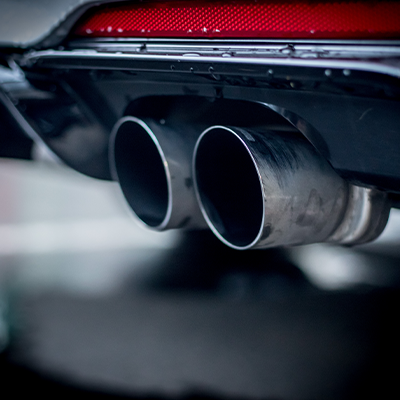- Home
- Services
- Exhaust System
- EGR valve replacement
EGR valve replacement

Exhaust Gas Recirculation or EGR controls the amount of exhaust gases recirculated back into the engine cylinders. The idea is to heat up the sucked-in air, decrease the combustion temperature and, consequently, reduce the nitrogen oxide emissions (NOx). The EGR may be controlled by pressure or electronically. Its opening angle depends on the engine type, its operation, mainly the temperature and the loads it is exposed to. The most common EGR malfunction results from soot contamination. You can tell an EGR failure by unstable engine operation, lack of power or the "check engine" light going on. If this is the case, the valve needs cleaning or replacing.
Tips
- Driving at low RMP reduces the life cycle of the EGR.
- Avoid driving with a faulty EGR to prevent serious engine failures
- If you block the EGR in a modern car, you run the risk of causing a serious engine failure in the long run
Scope of services
- Removing elements (depending on the engine type) obstructing access to the EGR
- Removing the EGR
- Cleaning or replacing the valve
- Cancelling the EGR errors in the engine computer
Find a car workshop
Check out our workshops that offer the service egr valve replacement in some of the biggest cities in your country
Additional info about the service
What is EGR?
The exhaust gas recirculation valve, also referred to as EGR, is a device mounted on the exhaust manifold. It regulates the amount of the exhaust gas which re-enters the inlet manifold and is sucked in by the engine. The exhaust gas is directed to the inlet manifold in order to heat up the sucked-in air to ensure a more efficient evaporation of fuel, decreasing of the combustion temperature and the amount of harmful substances in the exhaust gas, such as oxides of nitrogen and hydrocarbons. The amount of the exhaust gas which can be redirected into the engine without causing harm to it depends on the engine speed and load. The EGR valve is controlled by the engine computer.
How is the EGR valve replaced?
As the valve is exposed to a wide range of temperatures, gases and carbon black from the exhaust pipe, it may eventually get jammed and fail. In extreme cases, a damaged EGR valve may dramatically decrease engine power, disabling it altogether. If this is the case, the valve must be replaced. Replacing the valve requires removing the screws by means of which the valve is attached to the inlet manifold. The screws may be stuck, so a good idea is to spray them with a rust remover to facilitate their unscrewing.
What to keep in mind?
When fitting a new valve you should apply a new gasket, if provided for by the manufacturer. After replacing the valve, a diagnostic computer should be connected to the engine to cancel any errors resulting from the valve malfunction. It should stressed that some garages clean malfunctioning EGR valves, but this is only a temporary solution. Others block broken valves, which shortens the useful life of the engine, not to mention the negative impact of the harmful substances on the environment.